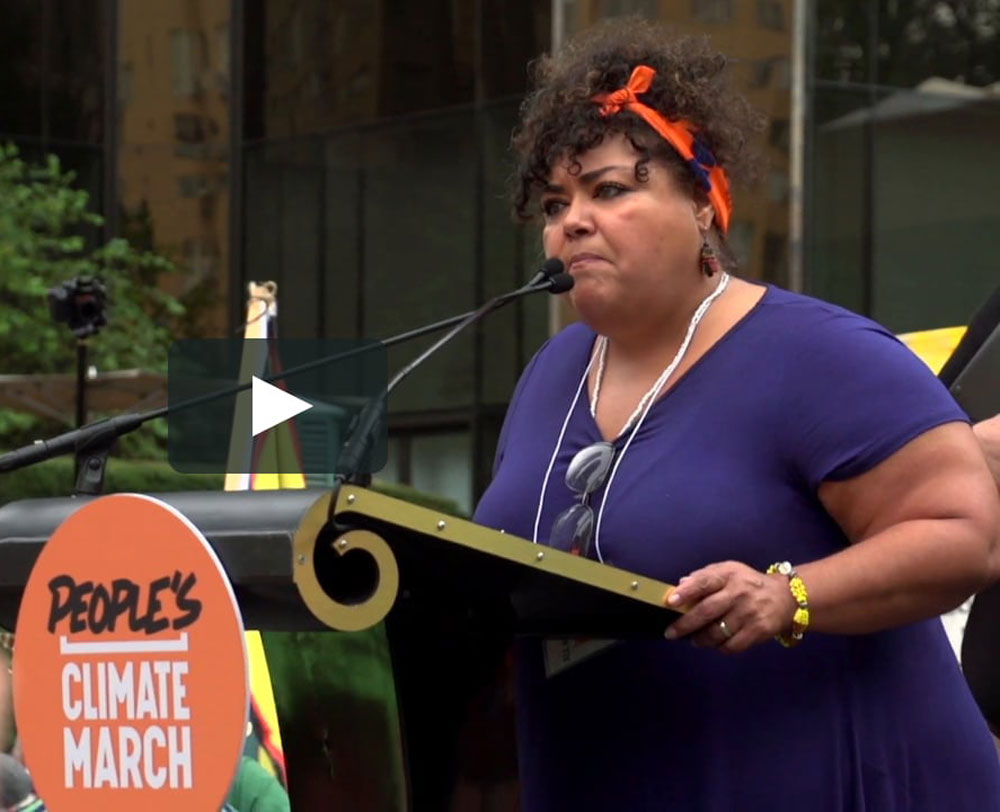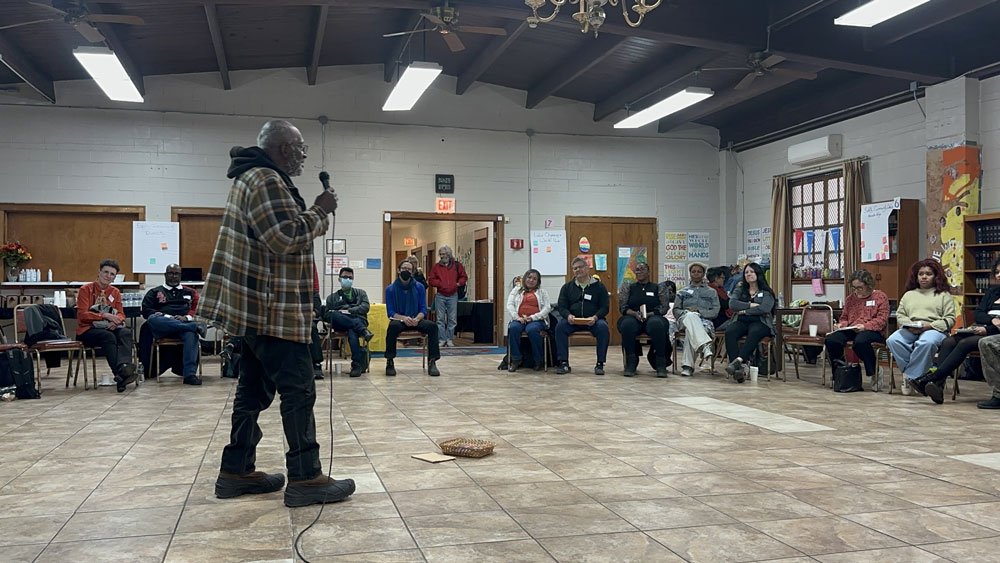
June 15, 2020; Yale Environment 360 and Reuters
Essential to an understanding of how environmental pollution has been allowed to get so out of hand is the fact that polluting industries and other serious environmental stressors are often sited in or near low-income neighborhoods and communities of color. This has long been established, but just last year, a study from the Union of Concerned Scientists found that Black and Latinx people in California end up inhaling an average of “40 percent more particulate matter from cars, trucks and buses than white Californians.”
Yale Environment 360 interviews Elizabeth Yeampierre, an activist who’s spent more than 20 years focused on environmental and racial justice. She’s co-chair of a coalition of over 70 organizations working toward racial and economic equity in the shadow of climate change and the disproportionate impact of COVID-19.
Yeampierre also runs a Brooklyn Latinx community organization, UPROSE, which helped create the first community-owned solar cooperative in New York. The co-op’s renewable energy will benefit the locals who built it, low-income neighborhood residents, small businesses hurt by the pandemic shutdown, and other people of color.
Yeampierre began her activism in her twenties, fighting police brutality for the Puerto Rican Legal Defense Fund. It did not take long for her to see that that environmental justice and racial justice are the same fight. As the study in California found, and as Yeampierre discusses, the ways certain communities were founded and developed have made it difficult for people of color and indigenous people even to breathe.
In our communities, people are suffering from asthma and upper respiratory disease, and we’ve been fighting for the right to breathe for generations. It’s ironic that those are the signs you’re seeing in these protests—“I can’t breathe.” When the police are using chokeholds, literally people who suffer from a history of asthma and respiratory disease, their breath is taken away. When Eric Garner died [in 2014 from a New York City police officer’s chokehold], and we heard he had asthma, the first thing we said in my house was, “This is an environmental justice issue.”
Yeampierre draws a straight line from slavery and the abuse of the environment to where we are now. Slavery in the US went hand in hand with taking land from indigenous people. That led to exploitation: clearcutting trees, damming rivers, pulling gold, coal, and oil from the ground. This type of manipulation continued through the centuries—the colonial era, the Civil War and Reconstruction, Jim Crow—and is reflected in the high incidence of COVID-19 victims in communities of color.
“I think about people who got the worst food, the worst healthcare, the worst treatment,” Yeampierre says, “and then when freed, were given lands that were eventually surrounded by things like petrochemical industries.”
Real estate costs and redlining, which did not actually end in 1968 with the signing of the Fair Housing Act, shunted poor families to spaces near factories and other sources of pollution, like highways.
Sign up for our free newsletters
Subscribe to NPQ's newsletters to have our top stories delivered directly to your inbox.
By signing up, you agree to our privacy policy and terms of use, and to receive messages from NPQ and our partners.
“There are a lot of people in California that are exposed to this pollution, but the inequities we found by race and by income for [particulate matter from burning gas and diesel], that’s just one part of the potential inequities in our transportation system and overall,” says UCS study author, David Reichmuth. “We should be doing things that reduce these inequities. We have a moral obligation to do that.”
When asked how one might fight climate change and enact racial justice, Yeampierre points to the Green New Deal, which, she says, wouldn’t be a legitimate “new deal” unless “it was centered on frontline solutions and on ensuring that frontline leadership would be able to move resources to their communities to deal with things like infrastructure and food security.” Last year, for instance, New York passed the Climate Leadership and Community Protection Act, which mandates that 35 percent of clean energy program resources will be invested in disadvantaged communities. Yeampierre also makes note of the pipelines that must be stopped or redirected to reduce other pollutants. On Monday, for example, the US Supreme Court determined that a pipeline planned to cross the Appalachian Trail could continue. In a 7–2 ruling, Dominion Energy was given the green light to continue construction of a 600-mile pipeline from West Virginia to North Carolina, including beneath the Trail, where it runs through the George Washington National Forest. (For more on this story, you can read Carole Levine’s story from February, where the question of whether land counts as “land” is raised.)
The decision will increase the pressure on the eight communities that have refused to provide permits for the pipeline. Kelly Martin, director of the Sierra Club’s Beyond Dirty Fuels Campaign, says, “Nothing in today’s ruling changes the fact that the fracked gas Atlantic Coast Pipeline is a dirty, dangerous threat to our health, climate and communities, and nothing about the ruling changes our intention to fight it.”
One of the eight is in Union Hill, Virginia, an unincorporated community that was founded at Emancipation and whose residents are descendants of those freed slaves. A former plantation holds a cemetery for those once enslaved. Residents and environmental groups went to court to prevent a pipeline compressor station slated to be built in their historic community. During questioning, 4th Circuit Court of Appeals Chief Judge Roger Gregory said, “Environmental justice is dealing with people who live and who are impacted. The people who live in the county, I’d think you’d start there.”
Yeampierre suggests environmentalists and those fighting for change, for racial and social justice, need to examine every step:
A just transition looks at the process of how we get there, and so it looks at not just the outcomes, which is something that the environmentalists look at, but it looks at the process—workers’ rights, land use, how people are treated, whether the process of creating materials that take us to a carbon-neutral environment is toxic and whether it affects the host community where it’s being built. It looks at all those different kinds of things.
From Brooklyn to California, in order to move people away from industries and practices that have given them asthma and weakened them in the face of the pandemic, away from systems that killed George Floyd and others like him, fundamental cultural metamorphosis is needed.
“We’ve had groups of white young people who have contacted us and have said to us, ‘How can we support you? How can we best use our resources and our skills to support the work that you’re doing?’” says Yeampierre. “You know what? That is the right question. Let’s do this together.”—Marian Conway











